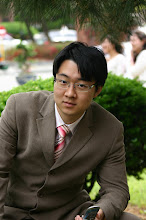2014 (73rd) Society for Investigative Dermatology (SID) Annual Meeting,
Albuquerque, USA, May 7-10, 2014,
"Hair cycles of Transplanted Human Hairs in Immunocompromised mice"
J Oh, M Kim, M Plikus, J Kim
JOURNAL OF INVESTIGATIVE DERMATOLOGY 134, S47-S47
276
Hair cycles of transplanted human hairs in immunocompromised mice
J Oh,1,2 M Kim,2 M Plikus1 and J Kim2 1 Developmental and Cell Biology, University of California, Irvine, Irvine, CA and 2 Department of Immunology and Hair Research Center, Kyungpook National University School of Medicine, Daegu, Republic of Korea
Growth of human scalp hair follicles is characterized by short telogen and prolonged anagen, often lasting many years. This makes it difficult to reliably capture the event of telogen-to-anagen transition. Because anagen initiation is a clinically relevant event in the human hair growth cycle, there is an unmet need for a better experimental model. In this study we aimed to characterize temporal dynamics of human scalp hair follicle regeneration in human-on mouse xenotransplantation model. We transplanted human scalp follicles into the skin of immuno-compromised nude (Foxn1 null) and SCID mice and carefully analyzed temporal dynamics of post-transplantation telogen-to-anagen transitions on serial-section histology and immunohistochemistry. Hair follicles were analyzed for up to one year after xenotransplantation, initially with 7-day intervals. Based on our histological studies and mathematical analysis we were able to construct a detailed probabilistic timeline of post-transplantation hair cycle phases. We distinguished the following phases: transplantation-induced catagen stages I, II, III, transitional stage (aka new anagen initiation), anagen II, III, IV, V, VI. Probabilistically, the peak in transitional stage hair follicles occured on post-transplantations day 33 in SCID mice and day 37 in nude mice. Our results provide a detailed experimental blueprint for future studies tasked with studying signaling regulation of human anagen initiation in human-on-mouse xenotransplantation model. Importantly, they also reveal that the choice of host (nude vs. SCID mouse) as an important experimental parameter to consider.
Google Scholar [Link]
Journal of Investigative dermatology [Link]
"Regulation of ear morphogenesis by macroenvironmental signals from hair follicles"
R Ramos, T Hsi, J Oh, CF Guerrero-juarez, M Plikus
JOURNAL OF INVESTIGATIVE DERMATOLOGY 134, S47-S47
274
Regulation of ear morphogenesis by macroenvironmental signals from hair follicles
R Ramos, T Hsi, J Oh, CF Guerrero-juarez and M Plikus Developmental and Cell Biology, University of California, Irvine, Irvine, CA
Hair follicle (HF) regeneration involves not only intrinsic signals from different HF compartments, but also inputs coming from the extra-follicular macroenvironment. Such signals can come from neighboring HFs, adipocytes, pre-adipocytes, and possibly other tissue-resident skin cells, allowing for collective regenerative behavior. We posit that skin also provides an ideal model to study the macroenvironmental regulation of morphogenesis. In the mouse external ear, a 2-3 cell-thick sheet of chondrocytes located in the center, comes in direct contact with HFs of the ear skin on both sides. We show that in mouse ear, development of HFs and cartilage closely overlaps in time and in space, providing a novel model to study signaling crosstalk between their respective morphogenetic programs. In the HF, WNT signaling acts to promote early morphogenesis and cyclic regeneration. In the cartilage, WNTs have been implicated in chondroblast proliferation and chondrocyte differentiation. Here, we evaluated the possibility of WNT signaling crosstalk in the shared ear skin / cartilage macroenvironment by modulating WNT signaling outputs using transgenic approaches. We first analyzed the effects of epithelial WNT overexpression on cartilage morphogenesis. Because ear shape and size are directly proportional to cartilage cell number, ear morphology can be used as a sensitive rheostat of chondrocyte population size. Mice overexpressing epithelial Wnts have significantly larger ears compared to WT control; consistent with the known function of WNT in delaying the onset of terminal chondrocyte differentiation. However, in a mouse model expressing soluble WNT antagonist in skin epithelia, ears become misshapen and notably elongated, but, surprisingly, not smaller. These results suggest that ear HFs and cartilage morphogenesis occur in shared signaling macroenvironment and reveal HF-derived WNT signaling inputs as functionally important modulators of auricular chondrogenesis.
.
Hair Biologist, Hair Transplantation Surgeon, Medical Scientist
Search
More Informations
- Research (20)
- Honors (7)
- Experiences (5)
- Volunteer (3)


